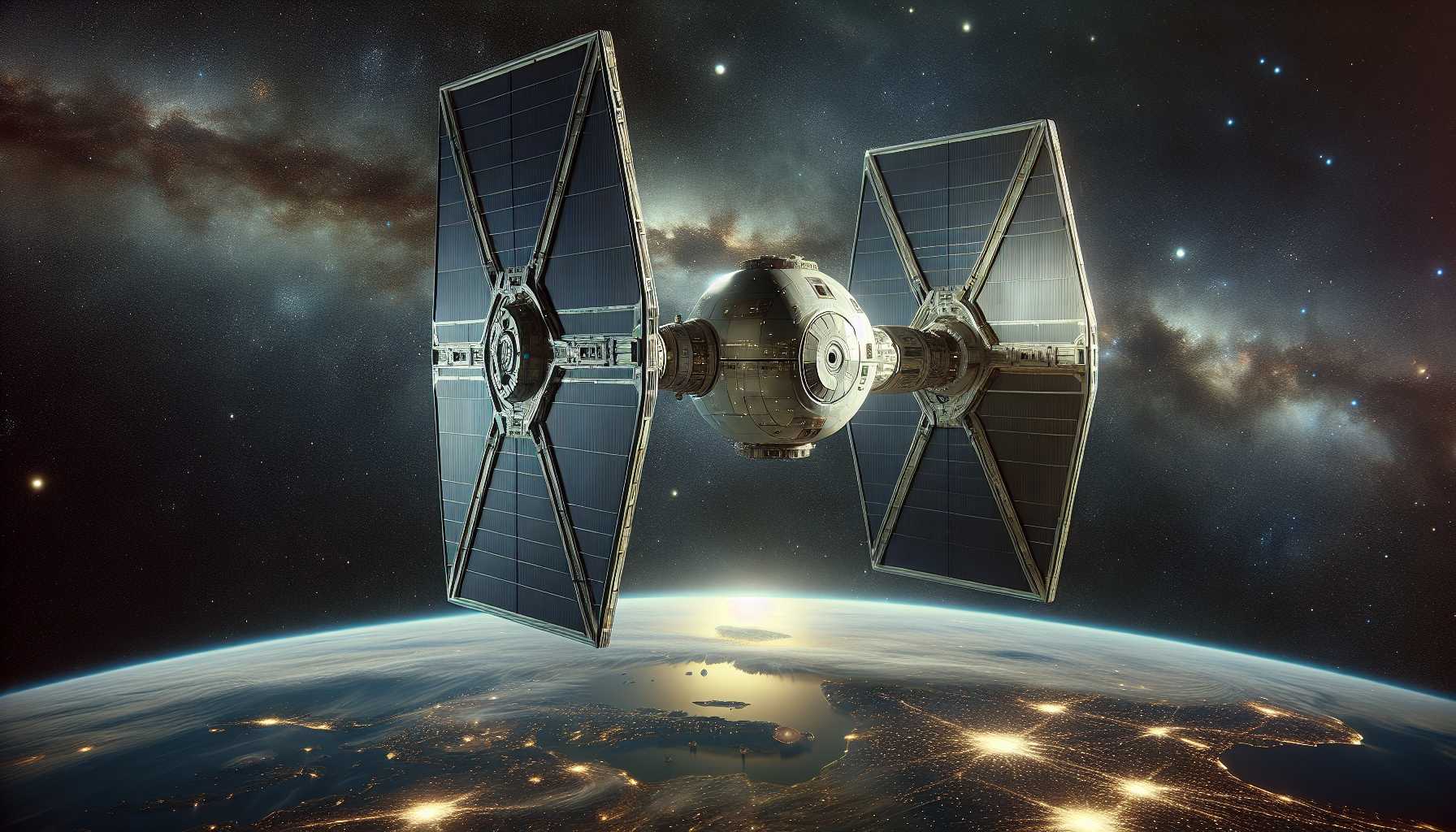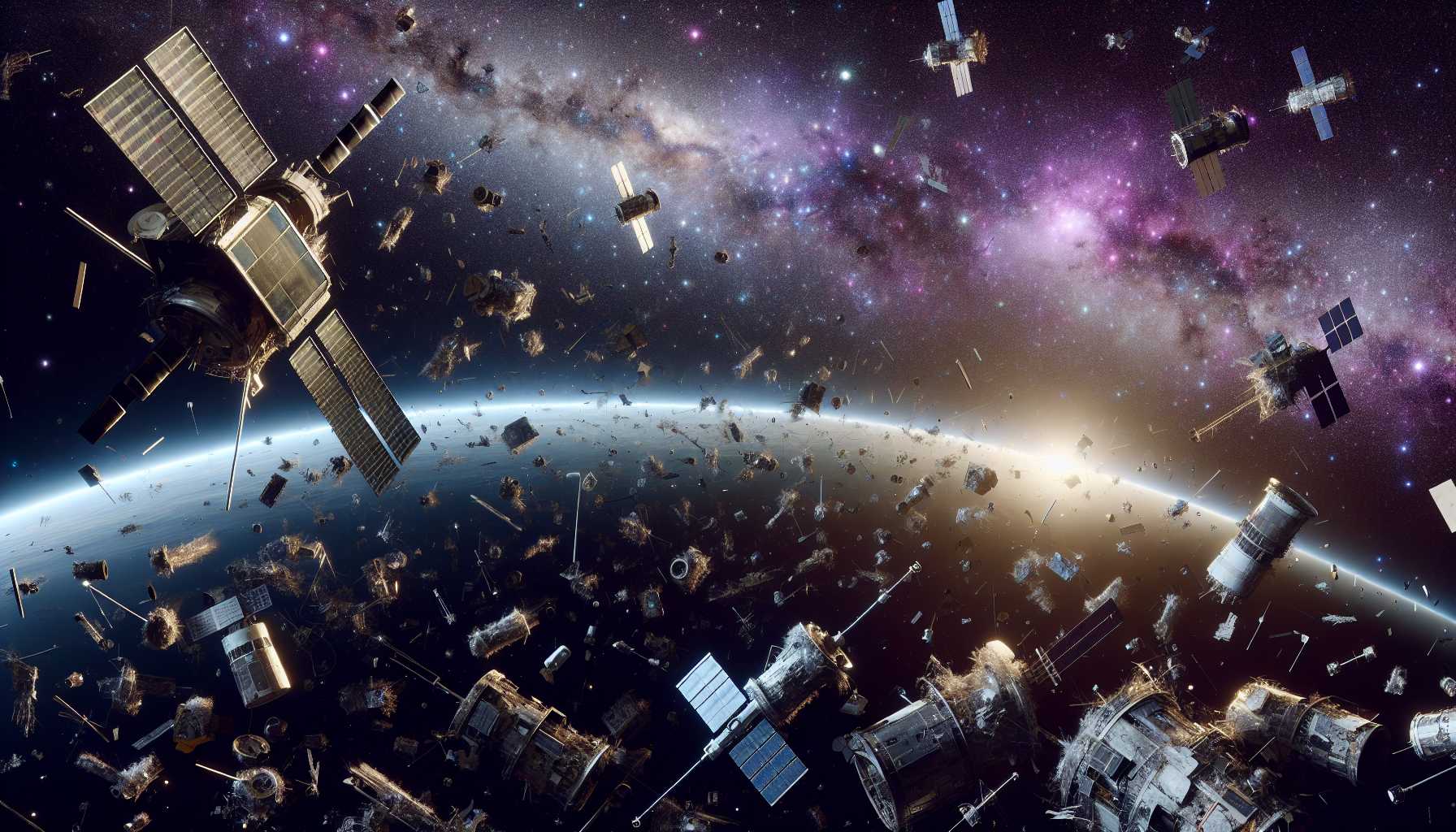As aficionados of all things tech and outer space, we’re occasionally reminded that what goes up must come down – sometimes, quite spectacularly. Today, let’s talk about a real-life space saga involving the European Space Agency’s (ESA) illustrious Earth-observing satellite, ERS-2, as it prepares for its grand, albeit terminal, performance in the atmospheric theatre. Dive in as we explore why this celestial chariot, a performer for nearly three decades, is gearing up for its final bow to Earth, and what space aficionados like us can learn from its fiery swansong.
The Sky’s the Stage: ERS-2’s Curtain Call
Imagine, if you will, a colossal metal craft, the length of a bus, speeding toward our planet at the end of its operatic cosmic cycle. The ERS-2 satellite, a veteran observatory of our Earth’s natural beauty and everchanging climate, is now tumbling out of orbit after a storied 30-year career. Much like an aging star making its final rounds before the spotlight dims, ERS-2 is expected to make one last, resplendent entrance into Earth’s atmosphere, where most of it will transmute into a marvel of fire and brimstone. But unlike the catastrophic descent of some artificial meteors in science fiction, this event is carefully choreographed by the forces of orbital mechanics and atmospheric physics. ESA predicts that the ERS-2 satellite will embrace its incendiary fate approximately on February 21, 2024, around 20:53 UTC, with a tolerance window of around 7.48 hours on either side, owing to the volatile temper of our upper atmosphere. Updates, undoubtedly watched by enthusiasts and specialists alike, will be broadcast by the venerable agency itself.
“That’s No Moon…”: The TIE Fighter Comparison
A cosmic coincidence has aligned to paint ERS-2 in the menacing hues of a Star Wars Imperial TIE fighter. It’s a visual conjured by the imaginative eyes tracking the spacecraft – notably those belonging to the specialists at HEO Robotics. As the images disseminate, the winking allusion to Vader’s fleet catches the imagination of the public and serves to underscore the lasting impact space culture has on our interpretation of the skies above us – though fear not, as unlike its lookalike, ERS-2 harbors no aspirations of galactic conquest.
Why Do Satellites Take the Plunge?
To the uninitiated, a satellite’s plunge towards Earth might seem like an interstellar oversight, but let’s break it down. This is actually space custodianship at its finest. In ERS-2’s case, its fuel reserves were depleted as its handlers nudged it into a lower orbit, purposefully queuing it for deorbiting. This decisive maneuver limits the chance of an accidental orbital pile-up and signals the mission’s controlled, responsible end. As a tech expert immersed in sustainability, I appreciate this ‘leave-no-trace’ ethos that governs the decline of artificial celestial bodies. Interstellar responsibility is about ensuring our space highways remain minus the defunct husks of past missions. It is our duty to maintain a clean, operational orbital belt – free from the potentially catastrophic repercussions that careless space debris management can incur.
Stars to Dust: The Lifecycle of Space Debris
Space debris isn’t just the remnant of extravagant sci-fi plotlines. Our orbit is a veritable floating junkyard of historical space expeditions, with the detritus ranging from nonfunctional satellites and spent rocket stages to the occasional astronaut’s lost tool. This orbiting maelstrom poses a real risk, necessitating meticulous tracking and the occasional evasive shuffle by active craft – the International Space Station has had its fair share of close calls. When considering the lowering altitudes of derelict satellites, we enter a realm governed by ‘atmospheric drag’ – a phenomenon ensuring the cleanup of our extraterrestrial environment according to the principles of physics. Ideally, dud satellites are ushered into atmospheric reentry, effectively disintegrating before they can litter our Earth.
A Drop in the Ocean: The Unlikely Peril from Above
To soothe any apocalyptic trepidations, rest assured that the threat from ERS-2’s reentry is slimmer than the odds of finding an Earth-like planet orbiting your nearest star. ESA, with its pulse firmly on the potential risk, reassuringly informs us that the odds of any material affecting us earthlings are lower than those of being waylaid by lightning. In the unlikely event that any fragments endure their atmospheric ordeals, the ocean’s vast embrace will likely swallow any remains. Thus, as the fiery descent unfolds, we can look toward the skies with a blend of awe and security, confident in our understanding of these cosmic processes. As we observe ERS-2’s final dance with the elements, let’s appreciate the intricate ballet of celestial mechanics, the dedication of orbital stewardship, and the necessity of sustainable management that turns space debris from a potential harrowing threat into an orchestrated and awe-inspiring natural disposal process. Clear skies to our silent sentinel as it bows out, and Godspeed to future missions that will one day tread its path towards the stars, and, inevitably, back to the dust of Earth.





